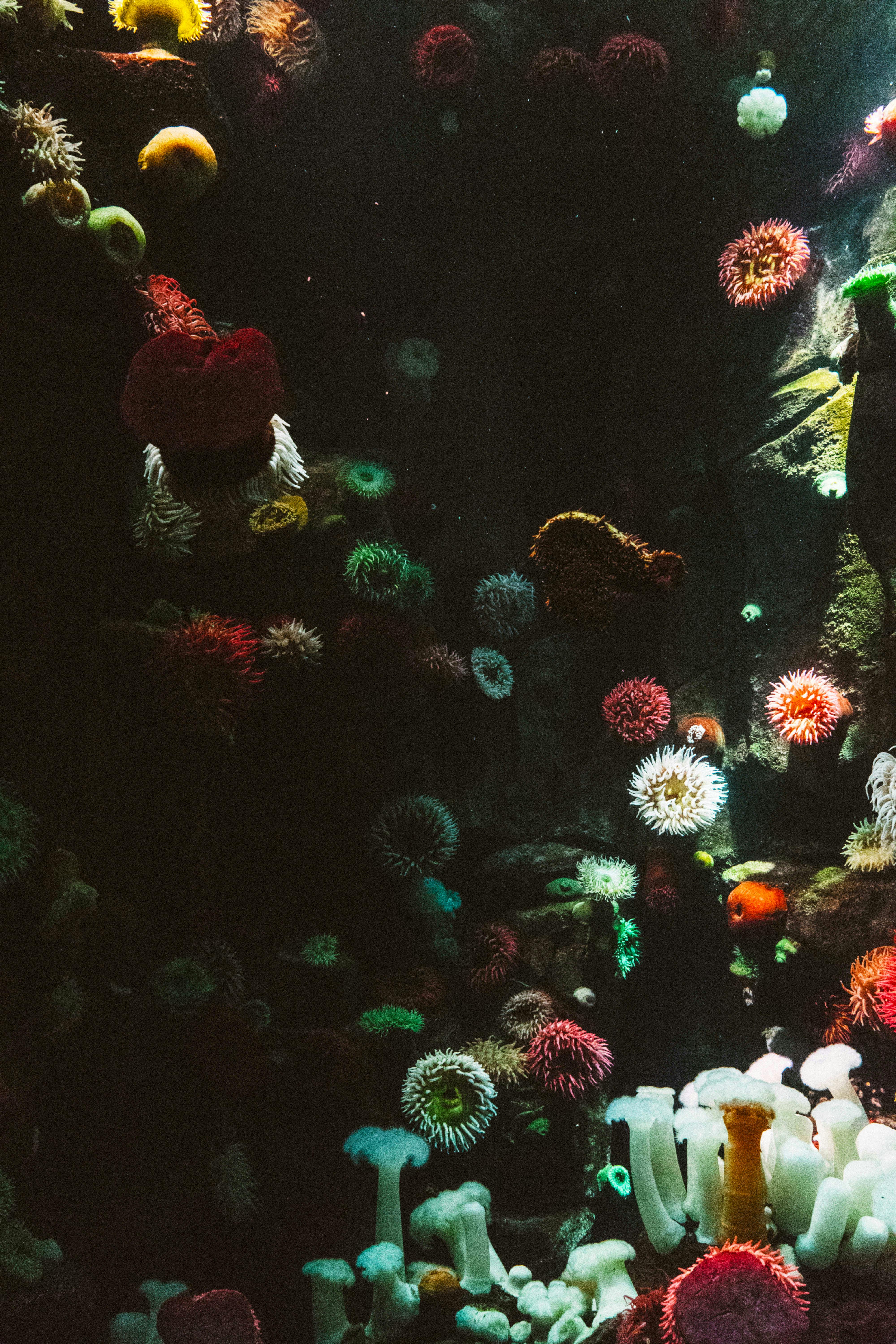Smart Ways to Maintain Freshwater Shrimp Aquarium for Success in 2025

Apply Now


Smart Ways to Maintain Freshwater Shrimp Aquarium for Success in 2025
Maintaining a vibrant and thriving freshwater shrimp aquarium involves more than just adding shrimp to water; it requires a careful balance of environmental conditions, feeding routines, and tank mates that work harmoniously. Freshwater shrimp are not only captivating pets to observe, but they also play a crucial role in maintaining the health of your aquarium. The species are known for their distinctive colors and behaviors, making them a favorite among aquarists. In this article, we will delve into effective strategies for successful freshwater shrimp care, from the initial setup to maintaining optimal water conditions. You will discover essential tips for shrimp tank decoration, habits of different shrimp species, and the best practices for feeding and breeding these fascinating creatures. By implementing these insights, you can create a flourishing ecosystem in your aquarium that keeps your shrimp happy and healthy. Key Takeaways: - Fundamental principles behind a successful shrimp aquarium setup - Care tips that enhance shrimp health and growth - The best shrimp species to consider and their habitat needs - How to establish and maintain optimal water parametersEssential Guide to Freshwater Shrimp Aquarium Setup
Creating an ideal freshwater shrimp aquarium begins with understanding the setup. It's essential to carefully select both the aquarium size and equipment, as these will influence the health and happiness of your shrimp.Choosing the Right Tank Size
The size of your shrimp tank can greatly impact their behavior and growth. A minimum of 10 gallons is ideal for a beginner shrimp tank, providing ample space for shrimp movement and plants. As a rule of thumb, you can keep around 10-15 shrimp in a 10-gallon tank, allowing them plenty of room to thrive.Aquarium Substrate and Decoration
The substrate is vital to creating a healthy environment for your shrimp. Opt for a fine substrate that’s gentle on their delicate bodies, such as sand or soft gravel, which provides the necessary surface area for beneficial bacteria to grow. Additionally, integrating plants—like Java moss or Anubias—into your aquarium not only adds beauty but also offers hiding spots and food sources for your shrimp.Essential Equipment for Your Shrimp Tank
Your shrimp aquarium will need proper filtration to keep the water clean without creating strong currents, which can stress the shrimp. Choose sponge filters or hang-on-back filters that are shrimp-friendly. Additionally, incorporating a heater may be necessary, especially in cooler climates, caring for freshwater shrimp works best within a temperature range of 72°F-82°F (22°C-28°C).Setting Up Lighting for Optimal Growth
Lighting plays a critical role in the growth of aquatic plants that contribute to a healthy shrimp environment. LED lights with a cycle of 10-12 hours a day will promote plant growth, benefiting the shrimp. Be aware of algae growth by ensuring a balance between light exposure and the existing plants.Establishing Water Chemistry and Parameters
Monitoring your water parameters is crucial for maintaining a stable environment. Aim for a pH level between 6.5 and 7.5, a temperature of around 75°F, and low ammonia and nitrite levels. Regular testing using water quality test kits will help you adjust any imbalances. Follow these principles for a successful shrimp tank setup, laying the foundation for shrimp health.Top Freshwater Shrimp Species for Aquariums
When selecting shrimp species for your aquarium, it’s important to consider their compatibility, care requirements, and behavior. Certain shrimp types are known for their resilience and beauty, making them perfect for beginners.Best Shrimp Species for Beginners
The Cherry Shrimp (Neocaridina davidi) is among the most popular shrimp for beginners due to its range of color variations and hardy nature. They adapt well to various water conditions and are relatively easy to breed. Another beginner-friendly option is the Ghost Shrimp (Palaemonetes paludosus), known for its transparent body and unique ability to foster a cleaner tank environment.Color Variations and Unique Species
Appearance can greatly influence the appeal of shrimp. For instance, the Bumblebee Shrimp (Caridina cf. cantonensis) features stunning patterns that intrigue aquarists. Other noteworthy species are the Blue Dream Shrimp and the Red Rili Shrimp, both admired for their striking colors and active nature.Consideration of Shrimp Tank Mates
Compatibility is paramount when considering shrimp tank mates. Fish like Betta should be avoided due to their aggressive tendencies. Instead, opt for small community fish such as Neon Tetras or other peaceful species that won’t threaten the shrimp. This consideration ensures a harmonious environment that allows all inhabitants to thrive.Understanding Freshwater Shrimp Behavior
It's fascinating to observe the social behavior of different shrimp species. For example, some shrimp enjoy floating near the substrate, scavenging for food, while others may exhibit a more territorial behavior. Understanding these behaviors will allow for better habitat enrichment strategies.Creating a Balanced Shrimp Ecosystem
A balanced ecosystem is crucial for the long-term success of your shrimp tank. Incorporate a mix of plants, appropriate tank mates, and regular observation of shrimp behavior to foster a thriving environment. This balance promotes not just shrimp health but overall aquarium success.
Freshwater Shrimp Care Tips for Aquarists
Understanding how to care for freshwater shrimp effectively will contribute significantly to their longevity and health. Ensuring their well-being takes time and commitment but is essential for a flourishing shrimp aquarium.Feeding Freshwater Shrimp: What to Provide
Shrimp diet primarily consists of algae, biofilm, and detritus found in the aquarium. However, supplementing their diet with high-quality shrimp food, like algae wafers or sinking pellets, will enhance their nutritional intake. Ensure to feed them small portions regularly, around 2-3 times a week, depending on their appetite and activity level.Implementing a Feeding Schedule
Establishing a consistent feeding schedule helps maintain shrimp health. Observe your shrimp to determine their feeding habits. Start by feeding small portions in the evening, as shrimp are more active during this time. Adjust portions based on consumption to avoid uneaten food sinking and polluting tank water.Monitoring Shrimp Health Indicators
Regular checks on your shrimp's appearance and behavior are crucial. Healthy shrimp display vibrant colors and are active; any signs of lethargy or fading colors can indicate poor water quality or disease. Use this knowledge to assess their health and identify potential issues!Understanding the Shrimp Molting Process
Molting is a natural and essential process for shrimp. They will shed their exoskeleton to grow, so it's crucial to ensure that water quality and parameters remain stable. During molting, provide extra hiding spots to reduce stress. Additionally, ensure they have access to calcium-rich food to support strong shell regrowth.Common Shrimp Care Mistakes to Avoid
Beginner aquarists often make errors such as overfeeding, neglecting regular water tests, and introducing incompatible tank mates. Avoid the temptation to overcrowd your tank, as this can lead to increased waste and stress. Incorporating these insights will significantly enhance shrimp health management within your aquarium.Effective Strategies for Shrimp Breeding in Aquariums
Breeding freshwater shrimp can be a rewarding experience, especially when creating an ideal environment for reproduction.Preparing the Shrimp Breeding Setup
To encourage breeding, ensure your shrimp have plenty of hiding spaces and plants. A breeding tank that mimics their natural habitats will increase their chances of successful reproduction. Careful adjustment of water parameters can also entice shrimp to mate.Understanding the Shrimp Reproduction Cycle
Female shrimp carry fertilized eggs for 2-6 weeks before they hatch. The eggs turn a distinctive dark color right before hatching, indicating that your shrimp is close to becoming a mother. Educating yourself about this cycle will prepare you for the changes occurring in your shrimp tank.Breeding Freshwater Shrimp: Tips and Tricks
Maintain stable water conditions during the breeding period to facilitate success. Ensuring that females have access to high-quality food and a stress-free environment enhances egg production. Watching for signs of females carrying eggs can help gauge breeding success.Fostering a Healthy Shrimp Brood
Once the baby shrimp, or "shrimplets," hatch, they can be fed powdered food or finely crushed flakes. Maintaining adequate water quality with appropriate tank mates will bolster the growth of the brood. Keep the environment consistent to encourage healthy development.Common Issues in Shrimp Breeding and Solutions
Sometimes breeding can present challenges, such as unsuccessful fertilization or shrimp care mistakes made by newbies. Addressing these issues involves the careful monitoring of water quality and ensuring that both male and female shrimp have a healthy balance in their diet and habitat. Being proactive will significantly increase breeding success.